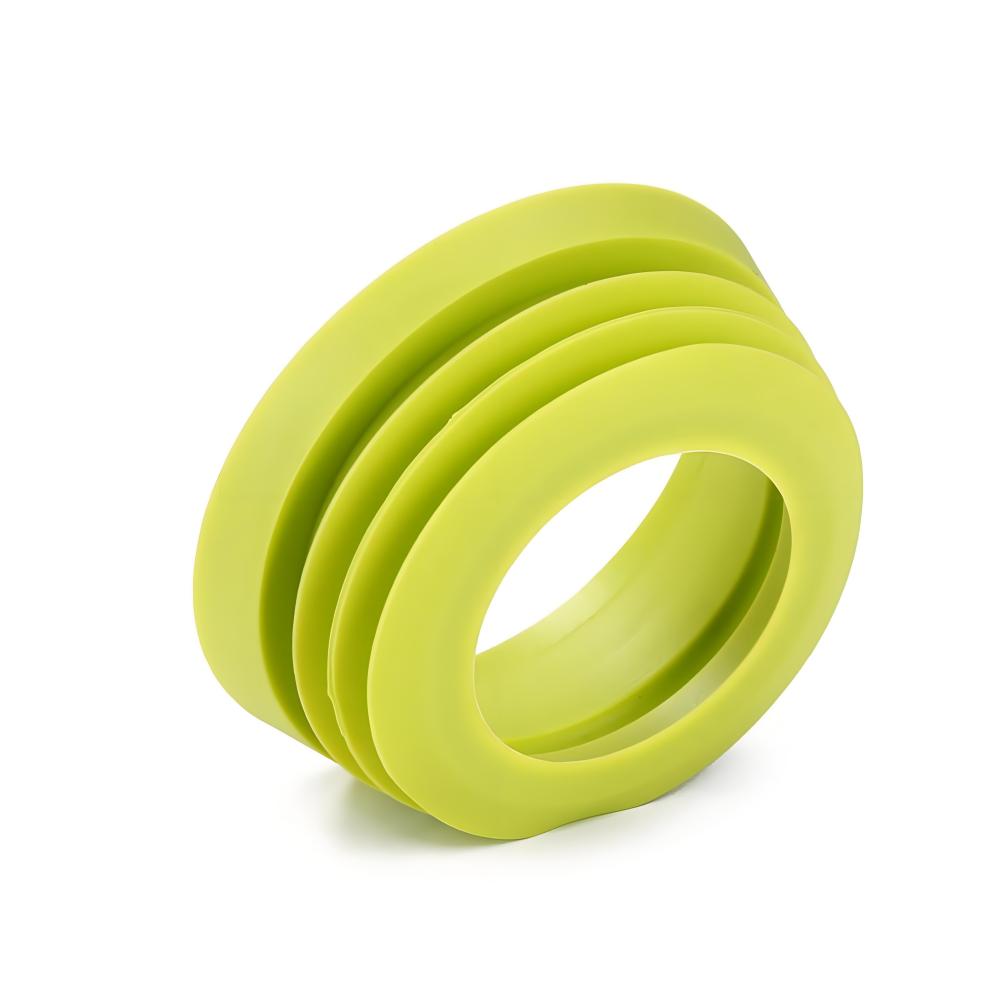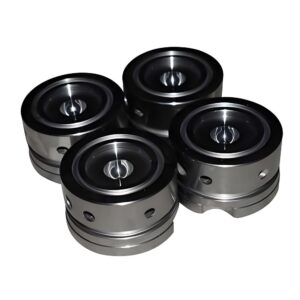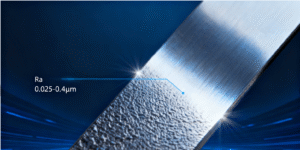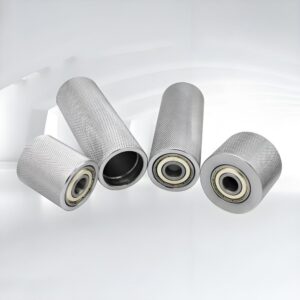hen exploring materials in industries like manufacturing, construction, or technology, the terms silicon and silicone often cause mix-ups due to their similar names. However, these two substances are entirely distinct in their makeup, characteristics, and practical uses. For professionals in precision machining, where choosing the right material can make or break a project, understanding the nuances between silicon and silicone is crucial. This guide dives deep into their differences, offering practical insights for businesses aiming to optimize material choices for international markets.
What Is Silicon? Exploring the Elemental Building Block
Silicon, known by its chemical symbol Si, is a naturally occurring element found in abundance in the Earth’s crust—second only to oxygen, comprising roughly 28% of its mass. Present in materials like sand, quartz, and clay, silicon is a metalloid, blending properties of metals and non-metals. Its crystalline structure and ability to conduct electricity under specific conditions make it a cornerstone of industries like electronics, solar energy, and construction.

Extracted through energy-intensive refining processes, silicon transforms from raw silica into forms suitable for high-tech applications. Its unique traits, such as durability and electrical conductivity, position it as a vital material in producing semiconductors, solar panels, and even building materials like glass and concrete. For machining professionals, silicon’s rigidity and precision make it a go-to for components requiring exact specifications.
What Is Silicone? Understanding Versatile Polymer
Silicone, in contrast, is a man-made polymer crafted from silicon, oxygen, carbon, and hydrogen. Unlike the elemental silicon, silicone is a synthetic compound with a flexible, rubber-like structure. Its backbone of alternating silicon and oxygen atoms, combined with organic groups, gives it remarkable elasticity and resistance to environmental factors like heat, moisture, and UV light. This durability makes silicone a favorite across diverse sectors.

Available in forms like gels, liquids, and solids, silicone adapts to countless applications, from industrial sealants to consumer goods. Its ability to maintain performance under extreme conditions has cemented its role in fields like automotive, medical device manufacturing, and even kitchenware production. For machining experts, silicone’s flexibility offers unique opportunities for creating resilient, adaptable components.
Silicon and Silicone: Unpacking the Key Differences
Though silicon and silicone share a common root—silicon as an element—their properties, uses, and manufacturing processes set them apart. Below, we break down these distinctions across chemical and mechanical properties, applications, and other practical considerations like appearance, cost, and safety, ensuring clarity for industry professionals.
Chemical Properties: Comparing Silicon and Silicone
- Silicon: As a standalone element, silicon appears as a hard, crystalline solid with a metallic sheen. With a melting point of approximately 1,410°C, it remains stable at room temperature but can react with certain chemicals under controlled conditions. Its strong covalent bonds make it ideal for high-tech applications like microchips and photovoltaic cells.
- Silicone: Silicone’s polymer structure, built on a silicon-oxygen chain, offers exceptional chemical stability. It resists degradation from sunlight, water, and extreme temperatures, making it suitable for long-lasting applications. Its inert nature ensures compatibility with sensitive uses, such as food-grade products or medical implants.
Mechanical Properties: Silicon vs Silicone in Action
- Silicon: Silicon’s rigid, brittle nature, with a hardness of 6.5–7 on the Mohs scale, suits applications where structural integrity is key. However, its lack of flexibility means it can fracture under stress, limiting its use in dynamic environments. Machining silicon requires precision to avoid cracks, making it ideal for static, high-precision components.
- Silicone: Silicone shines in flexibility and elasticity, capable of stretching without losing its shape. Its high tensile strength and resilience make it perfect for components like gaskets, seals, and tubing that endure repeated stress or deformation. In machining, silicone’s adaptability simplifies production for flexible parts.
Applications: Where Silicon and Silicone Shine
The unique traits of silicon and silicone lead to their use in distinct industries, each leveraging their strengths:
- Silicon Uses:
- Electronics and Semiconductors: Silicon’s selective conductivity powers microchips, transistors, and circuits in devices like smartphones and computers.
- Solar Energy: Silicon’s photovoltaic properties drive solar panel efficiency, converting sunlight into clean energy.
- Construction Materials: Silicon enhances the durability of glass, ceramics, and concrete, supporting infrastructure projects.
- Silicone Uses:
- Sealants and Adhesives: Silicone’s weather resistance makes it ideal for sealing joints in buildings and vehicles.
- Medical Equipment: Its biocompatibility supports safe use in implants, catheters, and other devices.
- Consumer Goods: Silicone’s heat resistance and durability appear in kitchen tools, phone cases, and wearables.
Other Considerations: Appearance, Cost, and Safety
Appearance:
- Silicon: Pure silicon has a metallic-gray, glossy finish, often seen in wafers or powders for technical applications. Its look is functional rather than aesthetic.
- Silicone: Silicone’s appearance varies—transparent, translucent, or colored—offering versatility for both practical and decorative purposes in products like molds or casings.
Cost:
- Silicon: High-purity silicon for electronics or solar applications carries a premium due to complex refining. Lower-grade silicon for construction is more budget-friendly.
- Silicone: Silicone is generally cost-effective for flexible applications, though specialized types, like medical-grade silicone, may increase expenses due to stringent quality requirements.
Safety:
- Silicon: While safe for most industrial uses, raw silicon poses risks like silica dust inhalation, requiring careful handling. Processed silicon, as in electronics, is safe.
- Silicone: Silicone’s inert nature makes it safe for medical, food-contact, and consumer uses. However, low-quality silicones with fillers may compromise safety, so sourcing matters.
How to Correctly Distinguish Between Silicon and Silicone?
For machining professionals, distinguishing silicon from silicone is critical to avoid costly mistakes. Here are practical steps to identify them:
- Evaluate the Application: Silicon typically appears in electronics or solar panels, while silicone dominates in flexible seals, medical devices, or consumer products.
- Inspect Physical Traits: Silicon is hard and brittle, while silicone feels soft and stretchy. A quick tactile or visual check often clarifies the material.
- Review Technical Specs: Material datasheets detail chemical and mechanical properties, confirming whether you’re handling silicon or silicone.
- Understand Production Processes: Silicon undergoes high-purity refining, while silicone is chemically synthesized. Knowing the material’s origin aids identification.
Misidentifying these materials can lead to production errors or performance issues. Consulting with suppliers or material experts ensures the right choice for your project’s needs.
Partner with Precionn for Precision Material Solutions
When precision matters, choosing the right material is only half the battle—partnering with a trusted machining expert seals the deal. Precionn, a global leader in the machining industry, specializes in crafting high-quality components tailored to international clients. With deep expertise in materials like silicon and silicone, Precionn delivers solutions that meet rigorous standards for performance and durability. Whether your project involves cutting-edge electronics or resilient seals, Precionn’s advanced technology and commitment to excellence ensure success.



